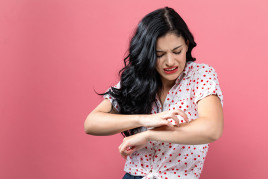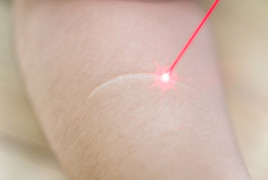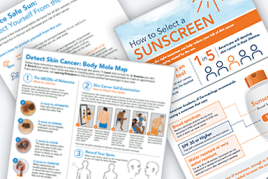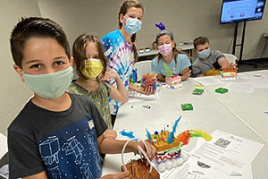Dry skin relief from handwashing
Is handwashing drying your skin?
Washing your hands can create dry skin that can flake, itch, crack, and even bleed without proper precautions.
To reduce your risk of dry, cracked skin from handwashing, follow these tips from board-certified dermatologists.
Has frequent handwashing left you with dry, cracked skin? That doesn’t mean you need to cut back on washing your hands. Handwashing removes harmful bacteria and viruses, which helps prevent you from getting sick.
With these tips from dermatologists, you can continue to wash your hands as needed and heal dry skin.
Here are the 3 steps that dermatologists recommend:
Wash your hands for at least 20 seconds in lukewarm water. Use soap to wash every part of your hands, including between your fingers and around your nails.
When choosing soap, it helps to know that some soaps are more drying than others. You may need to try a few different ones to find a soap that is non-drying to your skin.Dry your hands with a clean towel but leave some water on them. You can also let your hands air dry until slightly damp.
Apply hand cream or ointment to your damp skin, making sure you work some of the moisturizer into your fingertips and nails. Applying moisturizer after handwashing helps heal dry skin.
Keep in mind that some moisturizers can feel irritating to dry or chapped skin. A moisturizer that offers the following tends to feel less irritating when skin is dry and chapped:
Contains mineral oil or petrolatum
Comes in a tube (or tub) rather than a pump-bottle
Says it’s “fragrance-free” and “dye-free”
Many moisturizers that offer the above are thick creams or ointments.
Use hand sanitizer when soap and water are not available
To kill germs, the Centers for Disease Control and Prevention (CDC) recommends using a hand sanitizer that contains at least 60% alcohol.
After your hand sanitizer dries immediately apply hand cream or ointment
Hand sanitizer can be very drying.

Facts about handwashing
You may have seen well-meaning posts on social media about keeping your hands clean. Some posts may come from assumptions rather than science. Here’s what the science shows:
There is no evidence that using hand sanitizer makes it easier to pick up germs. It’s dry skin that increases your risk of picking up germs. Dry, cracked skin makes it easier for bacteria and other germs to get inside your body.
Handwashing helps to prevent illness, but frequent handwashing can dry your skin. To prevent and heal dry skin, apply hand cream or ointment after you wash your hands.
When skin is moist, it can better protect you from germs. That’s why dermatologists recommend applying hand cream or ointment to damp skin immediately after you wash your hands.
When it comes to health information, it’s essential to get accurate and reliable information, such as from your doctor, websites reviewed by doctors such as this one, and the CDC.
When to contact a dermatologist
If you still have dry skin after following these tips, you may need a dermatologist’s help. To heal dry skin, some people need a prescription cream or ointment. If you have a skin condition that causes extremely dry skin, such as atopic dermatitis, you need to treat the skin condition to relieve dry skin. A dermatologist can diagnose you. A dermatologist can provide the treatment you need.
Related AAD resources
Image
Getty Images
Reference
Centers for Disease Control and Prevention (CDC). “Handwashing.” Last updated 2/16/2024. Last accessed 10/24/2024.
Written by:
Paula Ludmann, MS
Brooke Schleehauf
Reviewed by:
William Warren Kwan, MD, FAAD
Carrie L. Kovarik, MD, FAAD
Omolara Olowoyeye, MD, FAAD
Last updated: 12/18/24
 Atopic dermatitis: More FDA-approved treatments
Atopic dermatitis: More FDA-approved treatments
 Biosimilars: 14 FAQs
Biosimilars: 14 FAQs
 How to trim your nails
How to trim your nails
 Relieve uncontrollably itchy skin
Relieve uncontrollably itchy skin
 Fade dark spots
Fade dark spots
 Untreatable razor bumps or acne?
Untreatable razor bumps or acne?
 Tattoo removal
Tattoo removal
 Scar treatment
Scar treatment
 Free materials to help raise skin cancer awareness
Free materials to help raise skin cancer awareness
 Dermatologist-approved lesson plans, activities you can use
Dermatologist-approved lesson plans, activities you can use
 Find a Dermatologist
Find a Dermatologist
 What is a dermatologist?
What is a dermatologist?